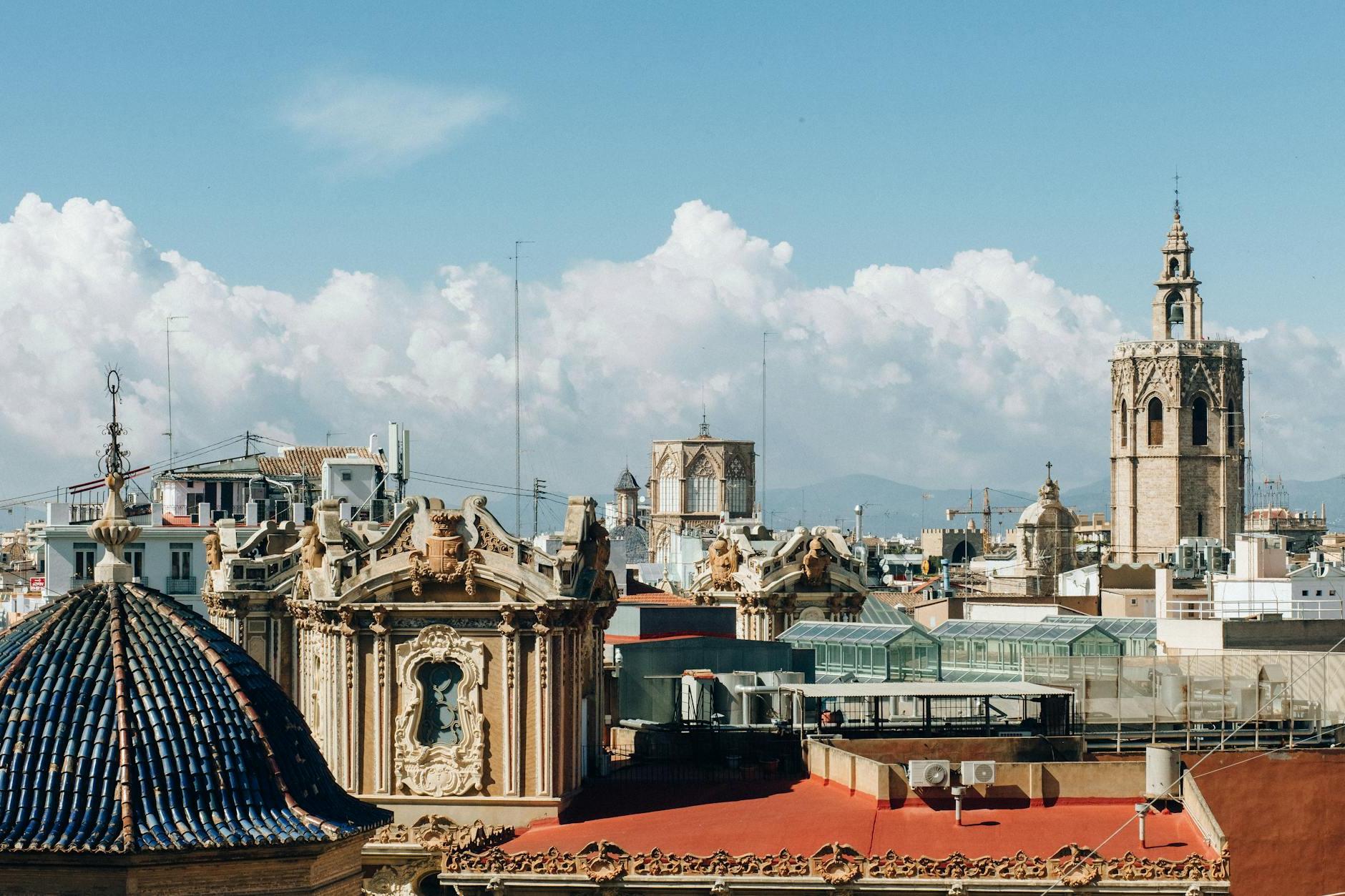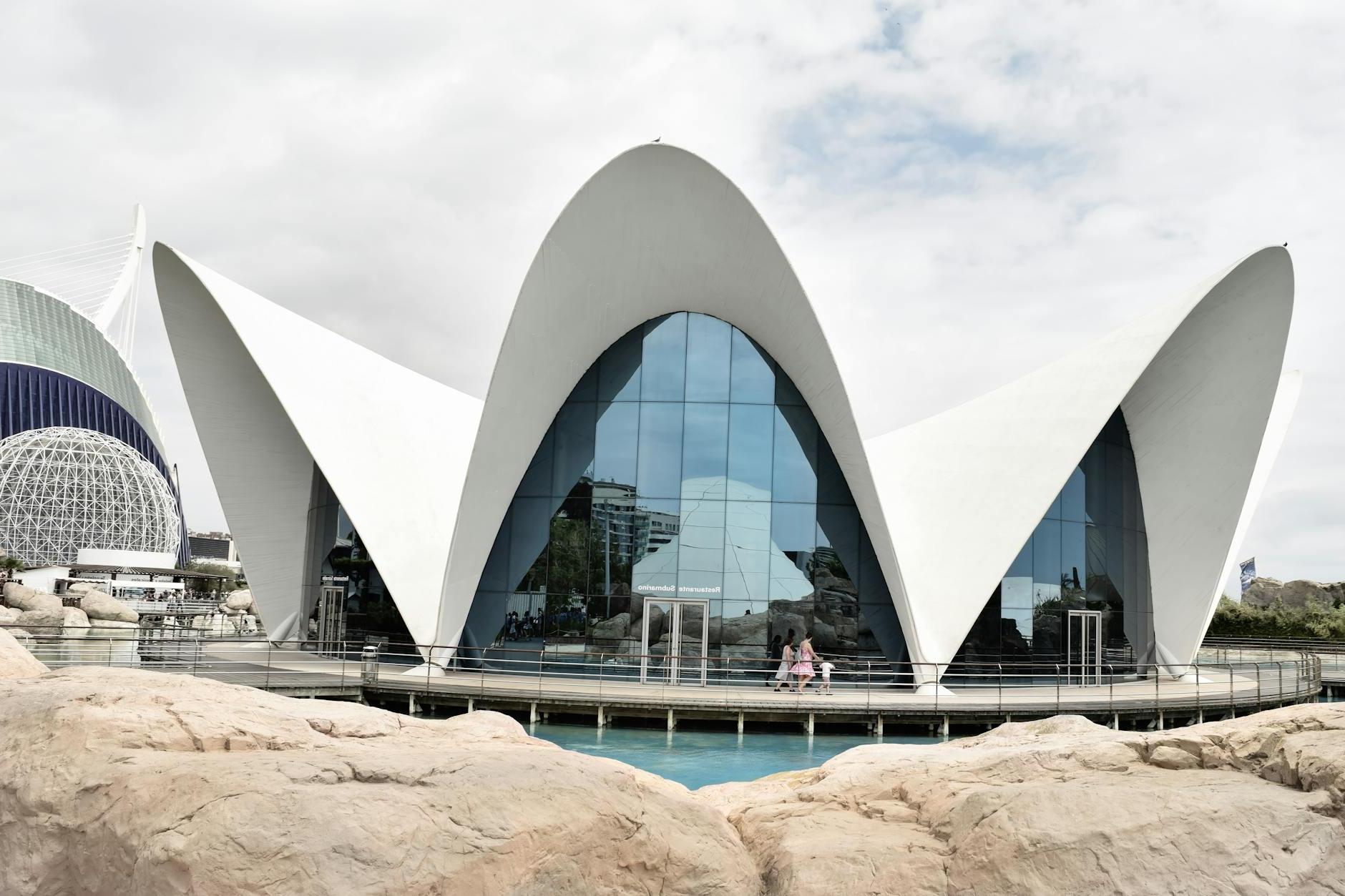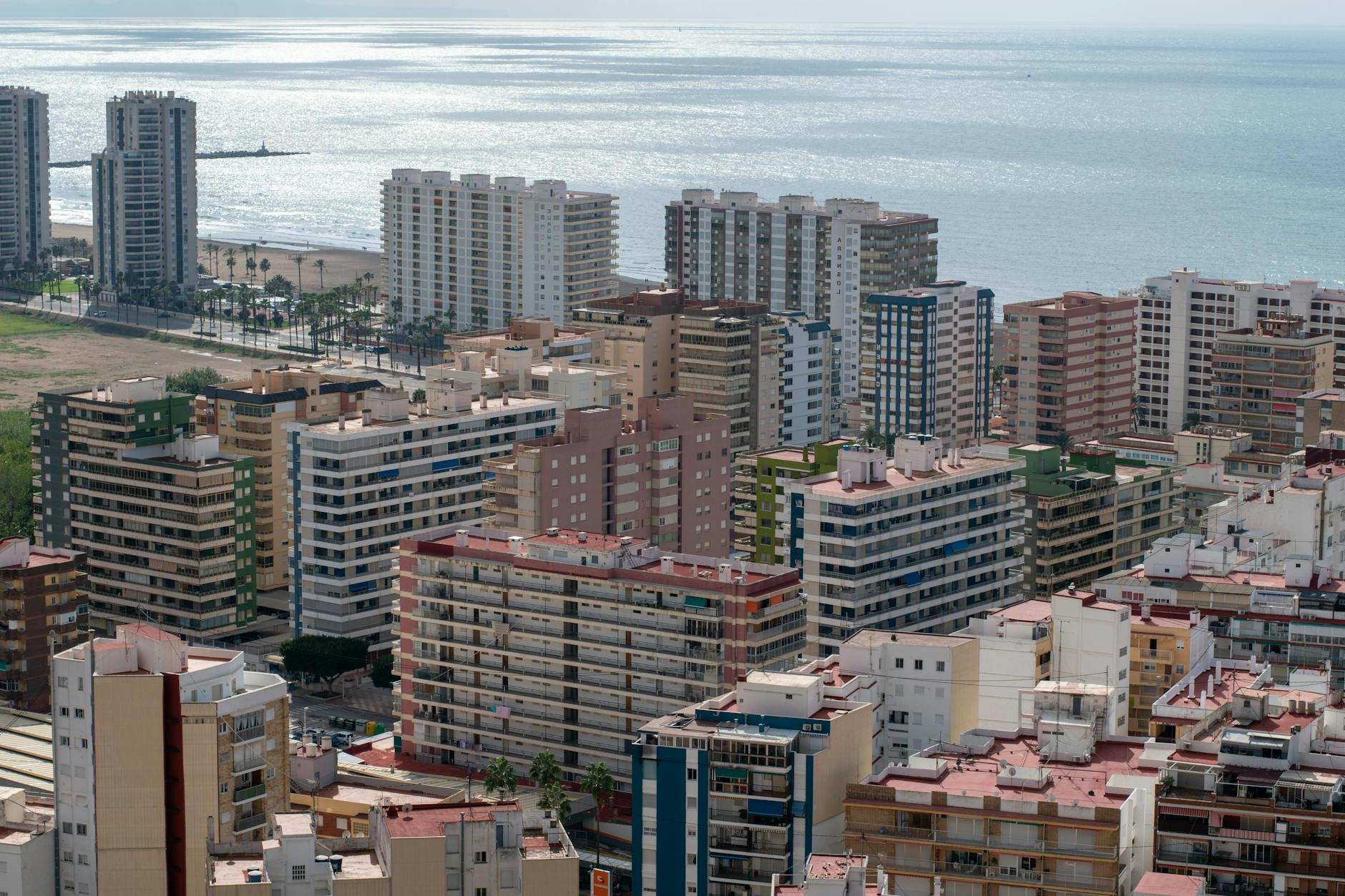Top 10 Must-See Places in Valencia, Spain
Posted on June 3, 2024 • 10 minutes • 1919 words
Table of contents
Welcome to Valencia, Spain’s third-largest city and one of its brightest gems! Known for its perfect blend of historic charm and modern innovation, Valencia offers a feast for the senses. Many people flock here during the spring for the famous Las Fallas festival, and the summer months draw sun-seekers to its beautiful beaches. However, no matter the time of year, Valencia has something for everyone. From stunning architecture to delightful cuisine, here are the top 10 must-see places that you absolutely cannot miss in this vibrant city.
10 best things to see in Valencia
10. Jardín del Turia

When visiting Valencia, you should definitely explore the Jardín del Turia. This beautiful park stretches over 9 kilometers, making it one of the largest urban parks in Spain. It used to be a riverbed and now it’s filled with lush greenery, playgrounds, sports fields, and even a giant Gulliver for kids to climb on. To get there, you can use the Valencia Metro or take a bus to the many entrances around the city. As you stroll through the park, make sure to notice the impressive bridges, historical monuments, and serene ponds. It’s a perfect spot for a relaxing walk, a picnic, or even a bike ride. Don’t miss the City of Arts and Sciences at one end of the park, a stunning architectural and cultural complex that is truly unique.
9. Plaza de la Virgen

When you visit Valencia, don’t miss the chance to see Plaza de la Virgen. This beautiful square is the heart of the city and offers a blend of history, culture, and relaxation. Surrounded by stunning landmarks like the Cathedral of Valencia and the Basilica of Our Lady of the Forsaken, it’s the perfect spot to soak in the local atmosphere. You can reach Plaza de la Virgen easily by taking a short walk from the city center or hopping on one of the many buses that stop nearby. While there, be sure to notice the Turia Fountain in the center of the square and enjoy some time at one of the charming outdoor cafes. It’s a great place to relax and experience the true spirit of Valencia.
8. Bioparc Valencia

When visiting Valencia, you should definitely stop by Bioparc Valencia. This unique zoo offers an immersive experience where animals live in habitats that closely resemble their natural environments. It’s like traveling through Africa without leaving Spain! From lions and elephants to gorillas and meerkats, you can see a wide variety of animals up close. To get there, you can take the metro to the Nou d’Octubre station or use bus routes 3, 29, 67, 81, or 95, which all stop nearby. Don’t miss the bird shows and feeding times, which are fun and educational for both kids and adults.
7. Mercado Central

When visiting Valencia, make sure to stop by Mercado Central, one of the largest and oldest markets in Europe. This bustling market is a feast for the senses with its colorful displays of fresh fruits, vegetables, seafood, and local delicacies. You’ll find a wide range of traditional Spanish foods and can try famous dishes like paella. The stunning architecture, featuring stained glass windows and ironwork, is also a sight to behold.
To get there, you can take a short walk from the city center or use the metro, with Xàtiva and Colón being the closest stations. Be sure to bring some cash as many stalls may not accept cards and go early in the morning to avoid the crowds and get the freshest produce. Enjoy the vibrant atmosphere and don’t forget to buy some souvenirs from local vendors.
6. Torres de Serranos

When you’re in Valencia, you definitely should visit Torres de Serranos. This historic gate, dating back to the 14th century, is one of the best-preserved monuments in the city. It once served as a part of the old city wall and now offers amazing views of Valencia from the top. To get there, you can easily take a bus or a taxi, or even walk if you’re near the city center. Make sure you pay attention to the fascinating Gothic architecture and intricate details as you explore. Don’t miss the chance to climb up the towers for a panoramic view of the city and the Turia Gardens below. It’s a great spot to take photos and soak in some history.
5. Llotja de la Seda (Silk Exchange)

When you visit Valencia, you simply must see the Llotja de la Seda, also known as the Silk Exchange. This amazing building, which is a UNESCO World Heritage Site, lets you step back in time to when Valencia was a key trading hub. The stunning Gothic architecture, complete with tall pillars and intricate carvings, will surely leave you in awe. You can easily get here by taking the metro to the Xàtiva station, then it’s just a short walk. Make sure to pay close attention to the main hall, known as the Sala de Contratación, and the beautiful orange tree-filled courtyard. These spots offer the perfect mix of history and beauty for your travel memories.
4. Oceanogràfic

When visiting Valencia, you should definitely check out Oceanogràfic, the largest aquarium in Europe. Located in the modern City of Arts and Sciences, it’s home to over 45,000 marine creatures from oceans across the world. You’ll see everything from dolphins and sharks to playful penguins. To get there, you can take the bus or metro; both have stops close to the City of Arts and Sciences. Once inside, make sure to visit the underwater tunnel for a mesmerizing experience and attend the dolphin show, which is a highlight for many visitors. Don’t forget to wear comfortable shoes as there’s a lot to explore!
3. Museo de Bellas Artes

When you’re in Valencia, visiting the Museo de Bellas Artes is a must. This museum is one of Spain’s most important art galleries and offers an amazing collection of paintings, sculptures, and decorative arts. You’ll see works by famous Spanish artists like Goya, El Greco, and Velázquez. To get there, you can take the local bus or tram to the “Alameda” stop, and it’s just a short walk from there. Keep an eye out for special exhibits and the beautiful architecture of the building itself, a former seminary that adds to the experience. Plus, the museum is usually less crowded than other tourist spots, making it a peaceful place to enjoy art.
2. Valencia Cathedral

When visiting Valencia, don’t miss the chance to explore the stunning Valencia Cathedral. This beautiful church, known for its mix of Gothic, Romanesque, and Baroque styles, boasts intricate details and a rich history that dates back to the 13th century. Inside, you’ll find treasures like the Holy Grail, which many believe is the real chalice used at the Last Supper. Getting to the cathedral is easy; from the city center, you can either walk or take a short bus ride. Be sure to climb the Micalet bell tower for an incredible view of the city. Remember to respect the sacred space and check the opening hours before you go. Enjoy your visit!
1. City of Arts and Sciences

The City of Arts and Sciences in Valencia is a must-visit for anyone traveling to this beautiful Spanish city. This incredible complex of futuristic buildings offers something for everyone: an immersive science museum, a cutting-edge planetarium, a stunning opera house, and an impressive open-air oceanographic park. To get there, you can take a bus, tram, or taxi from the city center; it’s well-signposted and easy to find. Make sure to wear comfortable shoes as there’s a lot of walking involved. Don’t miss the spectacular Hemisfèric for a 3D movie experience, and pack some water to stay hydrated as you explore the spacious grounds!
Frequently Asked Questions
1. What is the best time of the year to visit Valencia?
The best time to visit Valencia is from March to June. During these months, the weather is pleasant, with warm temperatures and blooming flowers, making it perfect for exploring the city. One of the highlights is the famous Las Fallas festival in March, where you can enjoy vibrant parades and fireworks. If you prefer fewer crowds and lower prices, consider visiting in September or October. The weather is still nice, and you can find good deals on accommodation and flights. So, whether you want to experience the lively festival season or enjoy a quieter trip, Valencia has something to offer year-round.
2. Should I rent a car in Valencia?
When deciding whether to rent a car in Valencia, it’s important to consider a few key factors. Valencia’s roads are generally in good condition, and the city’s layout makes driving relatively easy. However, traffic can be heavy during peak hours, which might slow you down. Parking can also be a challenge, especially in the city center; spaces are limited and can be expensive. On the other hand, Valencia has an excellent public transport system, including buses, trams, and a metro, which are convenient and cover most areas you might want to visit. Taxis are also readily available and offer a hassle-free way to get around. So, unless you plan to explore areas outside the city or travel during off-peak times, you might find it easier to rely on public transport and taxis during your stay.
3. What are different ways to get to Valencia?
Valencia is well-connected and easy to reach using various modes of transport. If you’re flying, you’ll likely land at Valencia Airport (VLC), just a short drive from the city center. For an alternative, you could fly into nearby airports like Alicante-Elche Airport (ALC) or Madrid-Barajas Airport (MAD) and then take a train or bus. Speaking of trains, Valencia’s Joaquín Sorolla and Estació del Nord train stations offer high-speed and regional connections from cities like Madrid and Barcelona. If you prefer the bus, companies like ALSA provide comfortable routes from many Spanish cities. Driving is another option; for example, you can take the A-3 highway from Madrid or the AP-7 coastal highway from Barcelona. Whether you choose to fly, ride the train, hop on a bus, or drive, reaching Valencia is convenient and straightforward.
4. Are there things to do with children in Valencia?
Yes, there are plenty of things to do with children in Valencia! Start with the City of Arts and Sciences, where the interactive exhibits at the Science Museum and the underwater wonders at the Oceanogràfic Aquarium will keep kids entertained for hours. Head to the Turia Gardens, where you’ll find playgrounds, bike paths, and the famous Gulliver Park, a giant playground shaped like a reclining giant from the story “Gulliver’s Travels.” If your kids love animals, the Bioparc is a must-visit; it’s an immersive zoo designed to replicate natural habitats. Valencia’s beaches are also perfect for family fun, with their soft sands and calm waters. You and your children will never run out of exciting things to do in Valencia!
5. Is Valencia safe to travel to?
Yes, Valencia is generally safe to travel to. It’s a popular tourist destination with a welcoming atmosphere. Like many cities, Valencia does have some petty crimes such as pickpocketing, especially in crowded areas and tourist spots. To stay safe, keep your valuables out of sight, be mindful of your surroundings, and avoid carrying large sums of money. Always stay alert, particularly in busy places like markets and public transport. Following these simple precautions will help ensure a smooth and enjoyable visit to this beautiful city.




